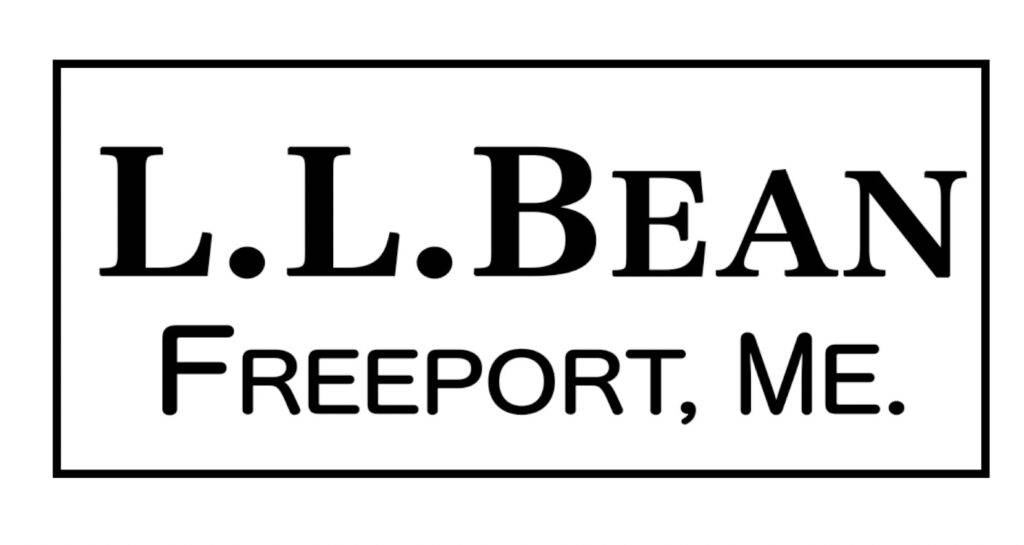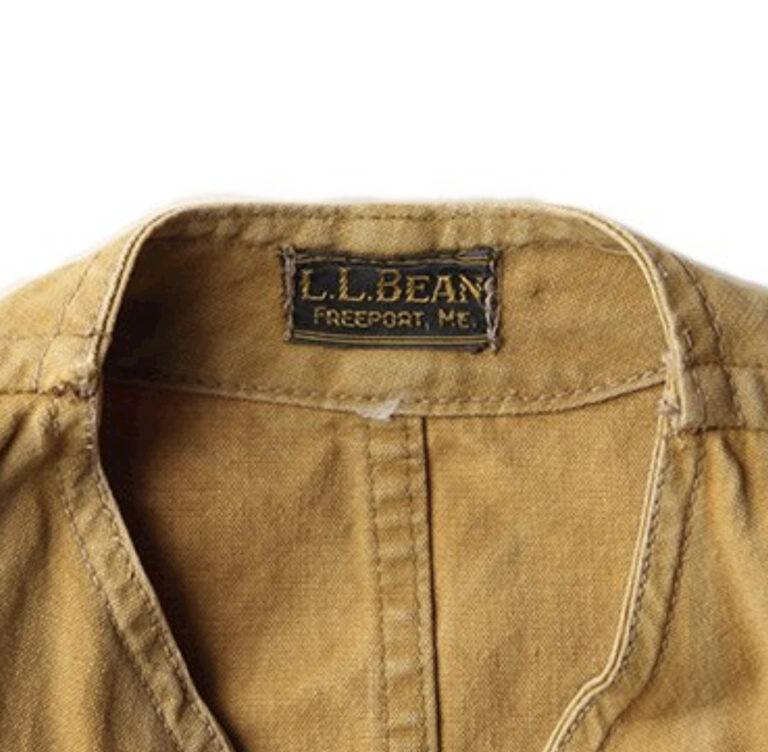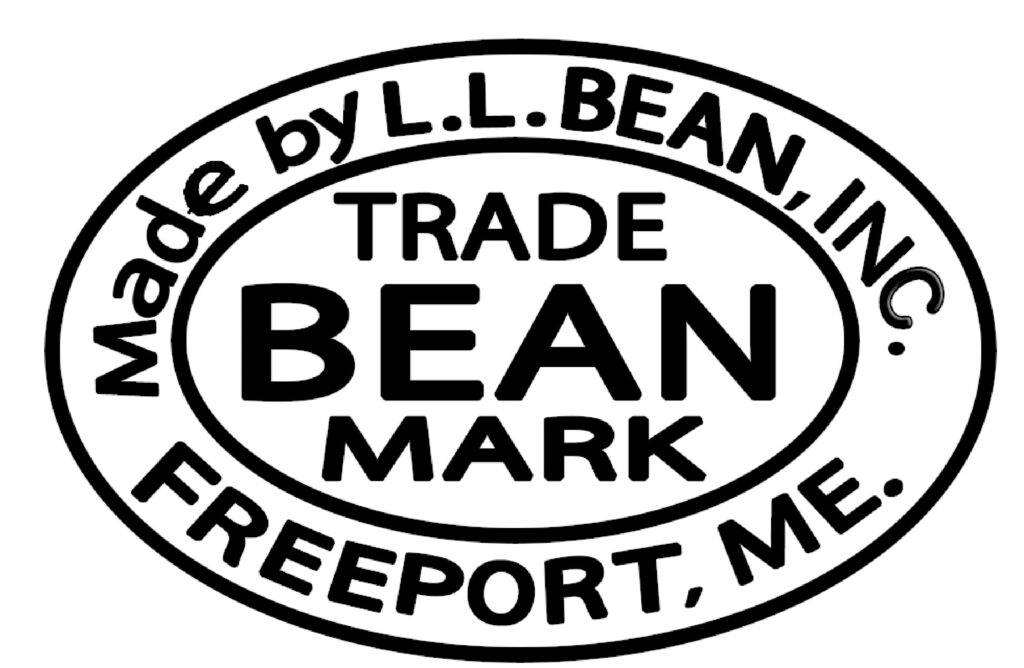HISTORICAL
How to identify vintage L.L.BEAN tags by age?
L.L.ビーンのビンテージタグの年代別の判別方法
OCTOBER – 2023 20 MINS READ
L.L.BEAN HISTORY

Leon Leonwood Bean
Leon Leonwood Bean was born in the town of Greenwood, Maine, on October 13, 1872, to Benjamin Warren Bean and Sarah (Swett) Bean, one of six sons. According to a grandson of Leon L. Bean, the latter’s middle name may have been originally “Linwood” and accidentally changed to “Leonwood”. In the Freeport Town Clerk’s Report for the 1898–1899 period, a “Leon Linwood Bean” married a “Bertha Davis Porter” on September 28, 1898.
Bean showed an early interest in business, earning his first money when he was nine years old. He learned that he could either attend the local fair or sell steel traps to his father, so he decided to sell the traps. Bean’s parents died four days apart when Bean was 12 years old. He subsequently moved to South Paris, Maine, to stay with family. When Bean was 13 years old, he killed his first deer, and at 14 sold another that he had shot to two unsuccessful hunters. For two years until he was 18, Bean worked on an uncle’s farm in West Minot, while attending school in the winter. At 18 Bean worked on a farm in East Hebron. At 19, Bean attended a year long business course at Kents Hill School, paying his way by selling soap.

In 1892, Bean worked in a Bangor creamery, followed by a job clerking in an Auburn clothing store. Bean married Bertha Porter in 1898. They moved to Freeport, her hometown, where he worked in his brother Otho’s dry goods and clothing store. They raised three children, Carlton, Warren and Barbara, before Bertha died in May 1939, age 73. Claire became his second wife in 1941
Bean was an avid hunter and fisherman. In his outdoor activities, his boots would become soaked with water, so he set out to resolve this inconvenience and developed plans for a waterproof boot. The boot was a combination of lightweight leather for the upper part and rubber on the bottom. He brought the plans to a cobbler and the first boots were made. Bean felt the boot produced to be of good quality, and obtained a list of non-resident Maine hunting license holders and prepared a descriptive mail order circular. He promised 100% money back for anyone who was unhappy with the boots. Because of this, Bean had to refund 90% of the costs of the first 100 sets of boots made, when the rubber on the bottom developed cracks. He seemed not to mind returning the money, and the popularity of the boots was clear. In 1911, he took out a loan in the amount of US$400 and set off to Boston, where he offered the United States Rubber Company the remainder of his US$400 to produce a better quality boot for him. With the better quality boots available, Bean set up a boot shop in his brother’s basement in Freeport, Maine. His skills and trials as an entrepreneur, along with his promise to return 100% money back on all items, were detailed by many local and national newspapers of the time. By 1917, he had sold enough of his boots to buy a dedicated building for his shop on the main street of Freeport. In 1918, Bean realized the importance of patenting his invention. As the patent was granted, he moved on to inventing and improving more outdoor equipment and expanding his store to what L.L.Bean is today.
According to Bean, “I took a pair of show rubbers from the stock on the shelves and had a shoemaker cut out a pair of size 7 tops. The local cobbler stitched the whole thing together.” Bean sold a pair to Edgar Conant, his first customer. Over the summer of 1912, Bean sold a hundred pairs. According to Montgomery, Bean “…took rubbers out of his store stock, and got two locals, Mr. and Mrs. Ted Goldrup, to cut out tops and stitch them to the rubbers. The soft, pliable rubber simply ripped apart after a few miles of hard going.” Bean paid U.S. Rubber in Boston to make a mold for the rubber bottoms, and then became their biggest customer until the mid-1960s, when Bean switched to the La Crosse Rubber Company in Wisconsin. In 1918, Bean hired the Goldrup’s daughter, Hazel,as a full-time bookkeeper and cashier. In 1918, he moved to a new building across the street, and by 1920, owned
Bean published a book in 1942, called Hunting, Fishing and Camping and an autobiography, in 1960, called My Story: the Autobiography of a Down-East Merchant.
Bean died in Pompano Beach, Florida, on February 5, 1967, at the age of 94. He was buried in Webster Cemetery in Freeport, Maine. At the time of his death, the annual sales of his company were in the hundreds of millions. Company policy of giving 100% money back on returned products applied until February 9, 2018.Maine Medical Center has named one of its wings in his honor. In addition, his portrait hangs in a ground-floor corridor at the hospital.
レオン・レオンウッド・ビーンは、1872年10月13日にメイン州グリーンウッドの町で、ベンジャミン・ウォーレン・ビーンとサラ(スウェット)・ビーン夫妻の6人の息子の一人として生まれました。レオン・L・ビーンの孫によると、彼のミドルネームはもともと「リンウッド」だったかもしれませんが、誤って「レオンウッド」に変更されたとのことです。フリーポート市町村書記官の1898年~1899年の報告書によると、「レオン・リンウッド・ビーン」という人物が1898年9月28日に「バーサ・デイビス・ポーター」という人物と結婚しています。
ビーンは幼い頃から商売に興味を示し、9歳の時に初めてお金を稼ぎました。彼は、地元の祭りに行くか、父親に鋼鉄製のわなを売るかを選ぶことができると知ったため、わなを売ることにしました。ビーンの両親は、ビーンが12歳の時に4日違いで亡くなりました。その後、ビーンは家族と一緒に住むためにメイン州サウス・パリに引っ越しました。ビーンが13歳の時、彼は最初の鹿を殺し、14歳の時にもう一匹の鹿を殺して2人の猟師に売りました。ビーンは、18歳になるまでの2年間、冬は学校に通いながら、ウエスト・マイノットの叔父の農場で働きました。18歳でビーンはイースト・ヘブロンの農場で働き、19歳でケント・ヒル・スクールで1年間のビジネス・コースを受講しました。彼は学費を稼ぐために石鹸を売っていました。
1892年、ビーンはバンゴーの乳製品工場で働き、その後オーバンの衣料品店で店員として働いた。1898年にバーサ・ポーターと結婚し、彼女の故郷であるフリーポートに転居し、兄のオットーの乾物衣料品店で働いた。彼らは3人の子供、カールトン、ウォーレン、バーバラを育てたが、バーサは1939年5月に73歳で亡くなった。1941年にクレアが2番目の妻となった。
ビーンは熱心なハンターや釣り師だった。アウトドア活動では、彼のブーツは水に濡れてしまうことが多かったので、彼はこの不便さを解消するために、防水ブーツの計画を立てた。このブーツは、上部は軽量な革、下部はゴムでできたものであった。彼はその計画を靴屋に持ち込み、最初のブーツが作られた。ビーンは、作られたブーツの品質が良いと感じ、非居住者のメイン州狩猟ライセンス保持者のリストを入手し、詳しい通信販売のチラシを作成した。彼は、ブーツに不満を持つ人には100%返金することを約束した。このため、最初の100セットのブーツのゴム底にひび割れが発生したとき、ビーンは90%の費用を返金しなければならなかった。彼は返金することを気にせず、ブーツの人気が明らかだった。1911年、彼は400ドルのローンを組んでボストンに向かい、ユナイテッド・ステーツ・ラバー・カンパニーに残り400ドルを提供して、より高品質なブーツを作ってもらった。より高品質なブーツが手に入ると、ビーンはメイン州フリーポートにある兄の地下室にブーツ店を構えた。彼の起業家としてのスキルと試練、そしてすべての商品に100%返金することを約束したことは、当時の多くの地元紙や全国紙で報道された。1917年までに、彼はフリーポートのメイン通りに店舗を構えるための専用ビルを買うのに十分な数のブーツを販売していた。1918年、ビーンは自分の発明を特許を取得することの重要性に気づいた。特許を取得すると、彼はより多くのアウトドア用品を発明・改良し、店舗を現在のL.L.Beanへと拡大していった。
ビーンによると、「私は棚に並べてあるショーラバーを1足取り、靴屋にサイズ7のトップを切り取ってもらった。地元の靴屋がすべてを縫い合わせてくれた」という。ビーンは最初の顧客であるエドガー・コナントに1足売った。1912年の夏、ビーンは100足を販売した。モントゴメリーによると、ビーンは「店に置いていたラバーを取り出して、地元の夫妻であるテッド・ゴールドルップ氏と夫人に頼んで、トップを切り取ってラバーに縫い合わせてもらった。柔らかいゴムは、数マイルのハードな使用の後には簡単に裂けてしまった」という。ビーンはボストンのU.S.ラバー社にゴム底の金型を作ってもらい、1960年代半ばにラ・クロス・ラバー・カンパニーに切り替えるまで、同社の最大の顧客となった。1918年、ビーンはゴールドルップ夫妻の娘であるヘイゼルを、フルタイムの簿記係兼レジ係として雇った。1918年、彼は向かい側に新しいビルに移転し、1920年までにビルの所有者となった。
1930s


To be precise, there is no proof that this name tag is the oldest tag. It is only a guess. This is because the word “inc(incorporated”)”, which appears later in the catalogue, only appeared from 1936, and until then it was only “l.l.bean.MFG(Manufacture)”. However, the waistcoats with this tag are not that old, and in fact it is unclear whether this tag was really used in the early days of the company. It should be added that the later name tag tags with “INC.” on them were certainly used from the 1930s onwards, so they may have been used in parallel in the 1930s, depending on what was being manufactured.
このネームタグが最古であるという確証は残念ながらありません。単なる推測になります。というのもカタログに出てくる「inc(incorporated)」という単語は1936年以降にしか登場せず、それまでは”l.l.bean.MFG(Manufacture)”だけだったからです。しかし私の確認した限りこのタグの付いたハンティングベストはそれほど古くな異様に感じられ実際にはこのタグが創業期に実際に使用されていたかどうかは明らかではありません。また、1936年のネームタグにはカタログにも確かに「INC.」が付いており、1930年代には製造品目によっては併用されていた可能性があります。




The oldest currently identifiable name tag for shirts is made up entirely of uppercase letters, although it is similar to later non-written letters. Another significant feature is the gold lettering on a black background. However, it was also used for other items, such as hunting coats, in addition to shirts, so it is assumed that this was the standard tag of the time. (However, other tags for shirts can also be identified).
PS : No INC is listed on the Maine guide shirt, which basically confirms that it is first without INC and later with INC. (This can be confirmed in the 1933-38 catalogue).
現在確認できる最古のシャツ用ネームタグは、後の筆記体以降のものに似ているものの、すべて大文字で構成されています。もう一つの重要な特徴は、黒い背景に金色の文字が施されていることです。しかし、シャツ以外にもハンティングコートなどのアイテムにも使用されていたため、これが当時の標準的なタグだったと考えられています。(ただし、他のシャツ用タグも確認することができます)。
追記 : メインガイドシャツには「INC」が記載されていないため、最初は「INC」なしで、後に「INC」が付いていたことが確認されます。これは、1933年から1938年のカタログで確認できます。
1930s -1940s



Leather goods have their own name tags, such as Maine hunting boots, bags, and pouches. Shirts and other clothing continue to use tags with gold embroidered text on a black background.
革製品のメインハンティングブーツ、バッグ、ポーチなど、独自のネームタグがあります。シャツやその他の衣類は、黒い背景に金色の刺繍文字のタグを使用し続けています。
1950s - 1960s


It is generally accepted that the black written “l.l.bean” signature name tag is older, but the catalogue shows that the timing of its appearance was not that different. Also, depending on the model, it seems to have been white or black (but there may be a difference of one to two years that cannot be confirmed), but it can be confirmed that this tag itself was used for a long time, especially on the ‘chamois cloth shirt’ representing L.L.BREN until 1964.
一般的には、黒地に金文字で “l.l.bean” と書かれたサイン入りネームタグの方が古いと考えられているが、カタログによると、その登場時期はそれほど変わらないようだ。またモデルによっては黒地か白地を使い分けしていたようだが(ただし、確認できない1〜2年の差がある可能性がある)このタグ自体が長期間使用されていたことは確かであり特にL.L.Beanを代表する「CHAMOIS CLOTH SHIRT」に(1955年にカタログ新ロゴタグ登場)1964年まで使用されていたことが確認できる。


I think the written “l.l.bean” signature name tag was most likely created for the 40th anniversary in 1952. In fact, the black name tag from 1953 and the white name tag from 1956 confirm that items with this written tag are from the 1950s onwards. The black tag does not appear to be late 50s as some people believe.
私の考えでは、黒地に白文字で “l.l.bean” と書かれたサイン入りネームタグは、1952年の創業40周年を記念して作られたものと推測しています。実際、1953年には黒いネームタグが、1956年には白いサイン入りネームタグが使用されたことが確認できています。黒いタグは一部の人が言うように1950年代後半のものではないようです。


Unfortunately, it is not known when this written “l.l.bean” signature name with square frame tag was released. (If anyone knows, please let us know.) However, it definitely predates the following bold-faced written signature.
残念ながら、この四角いフレームタグの “l.l.bean” サイン入りネームタグがいつリリースされたかは不明です。もしご存知の方がいらっしゃいましたら、お知らせください。ただし、次の太字の書かれた署名よりも古いことは間違いありません。
1960s (68 or 69) - 70s


After the death of legendary founder Leon Leon Leonwood Bean in 1967, his grandson, Leon Arthur Gorman, became president of L.L. Bean. The name tag was changed at that time, with the letters being made bolder. The change was completed in 1968 or 1969, during a time when both the old and new name tags were used. The new tag is shown in the 1969 catalogue.
伝説的創業者である Leon Leon Leonwood Bean が 1967 年に亡くなると、彼の孫である Leon Arthur Gorman が L.L.Bean の社長になりました。当時、ネームタグが変更されたと考えられています。基本的には、文字は同じままでしたが、太字になりました。移行期間を含めて、ネームタグが完全に変更されたのは 1968 年か 1969 年と推測しています(新しいネームタグは 1969 年のカタログに掲載されています)。
1978?- 1979


I suspect that the number of individuals is particularly small. I have never seen a combination of American-made write-type and trademark. It is assumed that the name tag was only used in the late 70s, as it was soon changed to the logo that is still used today.
このタイプのタグは個数が特に少ないのではないかと考えています。アメリカ製の文字と商標の組み合わせは見たことがありません。このネームタグは、すぐに今日でも使用されているロゴに変更されたため、1970年代後半にのみ使用されたと推定されています。


This tag is also rare. I don’t particularly intend to collect them as they are not for shirts, but I predict that in the 80s there will be fewer TM marks as they will be register marks. This one may be even less common than the written type one.
このタグも珍しいです。シャツ用ではないので、特に収集するつもりはありませんが、80年代には登録商標となるため、TMマークは少なくなると予想されます。このタグは、文字タイプのタグよりもさらに珍しいかもしれません。
1980s


The logo had been used in the catalogue since the 1970s, but it was not until the 1980s that it was completely replaced by a product name tag. In addition, the number of products made in the USA gradually decreased, while the number of products made in Asia and South America also increased. Here, written type product tags temporarily disappeared.
このタイプのロゴは1970年代からカタログで使用されていましたが、製品名タグに完全に置き換えられたのは1980年代になってからです。さらに、米国製の製品は減少していった一方で、アジアと南米製の製品数は増加していきました。この後に筆記体の製品タグは一時的に消えてしまいました。


The chamois cloth is L.L.Bean’s traditional range of shirts, but it is from this period that it became a brand and entered the logo name. However, it is not in the red letter colour of later years, but in the same green colour. Many products from the same period still use fabrics made in the USA and often do not use cheap imports (fabrics from outside the country).
シャモアクロスはL.L.Beanの伝統的なシャツのシリーズですが、ブランドとなり、ロゴ名に採用されたのはこの時期からです。ただし、後年の赤い文字の色ではなく、同じ緑色です。同じ時期の多くの製品は、まだ米国製の生地を使用しており、しばしば安価な輸入品(国外製の生地)を使用していませんでした。
1980s - 1990s


In the early 1980s, the US trade deficit related to clothing grew rapidly. The garment trade deficit rose 53% from 1983 to 1984 and 25% from 1984 to 1985, reaching USD 17 billion (USD 1.36 trillion at 80 yen to the dollar) in 1985. As a result, a coalition of 245 industry and trade unions in the USA formed Crafted with Pride in 1984 to campaign to encourage consumers to buy clothing made in the USA. in the U.S.A. Council was founded in 1984 by a coalition of 245 industry and trade unions in the United States. However, the tide of history could not be reversed and by the 1990s and early 2000s, most US-branded clothing production had moved overseas.
1980年代初頭、米国のアパレル関連の貿易赤字は急速に拡大しました。衣料品の貿易赤字は、1983年から1984年にかけて53%、1984年から1985年にかけて25%上昇し、1985年には170億ドル(1ドル80円で換算すると1.36兆ドル)に達しました。この結果、米国のアパレル業界と労働組合245団体が1984年に「Crafted with Pride in the USA」を結成し、消費者に米国製の衣料品を購入するよう呼びかけるキャンペーンを展開しました。しかし、歴史の流れは覆すことができず、1990年代から2000年代初頭にかけて、米国ブランドの衣料品生産の大半は海外に移転しました。


As US apparel brands move their factories overseas, L.L.BEAN also moves its factories overseas. L.L.BEAN begins to differentiate itself by focusing on the most important items of the brand (e.g. bean boots and Maine hunting jackets); the name ‘chamois cloth’ also begins to be used by other companies and is emphasised in red letters. This name tag is used until the 1990s, but is now even used for items produced in Asia, It is important to be careful when buying second-hand clothing, as this name tag is now used even for items produced in Asia.
アメリカのアパレルブランドが工場を海外に移転するにつれて、L.L.Beanも工場を海外に移転しました。L.L.Beanは、ブランドの最重要アイテム(例:Bean Boots、Maine Hunting Jackets)に焦点を当てることで差別化を図り始めます。また、「chamois cloth」という名前も他社で使用されるようになり、赤い文字で強調されるようになりました。このネームタグは1990年代まで使用されていましたが、現在ではアジアで生産されたアイテムにも使用されているため、中古の衣料品を購入する際は注意が必要です。
1990s


It is one of the rarest tags in existence, especially on shirts. Most of them are made in the USA (fabrics are made overseas) and Canada (there are probably some made in Asia). It may have been the last outsourced factory for shirts that were particular about many special designs. After this, it becomes a simple logo, but the quality of the fabric etc. drops, so it may be said that it is the last time you can buy a proper one made in the USA (I don’t buy many after this tag except for unusual patterns).
これは、現存する最も希少なタグの一つであり、特にシャツには珍しい。ほとんどはアメリカ製(生地は海外製)とカナダ製(おそらく一部はアジア製)である。多くの特殊なデザインにこだわったシャツの最後の外注工場だったかもしれない。その後、シンプルなロゴになるが、生地などの品質が低下するため、アメリカ製の本格的な製品が買える最後の機会と言えるかもしれない(このタグ以降、変わった柄以外はあまり買わない)。


This simple tag will be the last American-made tag. However, it is also used for other products besides US-made products, some of which are rare, such as Canadian-made products, but the quality is declining as the focus shifts to mainly Asian production, such as Honduran, Hong Kong and Sri Lankan-made products. (Shirts were still of good quality until the end.)
このシンプルなタグは、最後のアメリカ製タグになります。ただし、アメリカ製以外の製品にも使用されています。その中にはカナダ製のような珍しいものもありますが、ホンジュラス、香港、スリランカ製などのアジア製に重点が移行するにつれて、品質が低下しています。ただし、シャツは最後まで高品質でした。
– recommendation –
THE TRUE HISTORY OF L.L.BEAN / VINTAGE TAGS
OCTOBER – 2023 20 MINS READ
“L.L.Bean” is a leading American brand. It is also my favorite brand. It is an integral part of the history of hunting and outdoor activities. The Maine Jacket, the Chamois Shirt and the Maine Hunting Boots are their signature products. But I have my doubts about the brand. Look back in history and study the old tags.
L.L.Beanはアメリカを代表するブランドであり、私のお気に入りのブランドでもあります。狩猟やアウトドア活動の歴史において欠かせない存在です。メインハンティングジャケット、シャモアシャツ、メインハンティングブーツは、彼らの代表的な製品です。しかし、私はこのブランドに疑問を持っています。歴史を振り返り、古いタグを研究し正しい歴史を学びましょう。ただし彼らが素晴らしいブランドであることは変わりはありません。

THE LOST PENDLETON WOOLEN MILLS / VINTAGE TAGS
JULY – 2023 20 MINS READ
You will no longer be able to get your hands on a Pendleton shirt. Some would argue that this is not true. To be precise, Pendleton shirts and trousers will still be in the shops every winter. T-shirts with the logo may even be on sale. However, they are licensed products produced in Asia. Whether that is genuine or fake depends on the person. But I feel that only shirts made in the USA on American-made Pendleton fabric and sewn in the USA have any meaning.
もうあなたはペンドルトンを手にいれることはできません。と言うとそんなことはないと反論する人はいるでしょう。正確にはこれからもペンドルトンはお店には毎年のように並ぶでしょう。あなたはその商品を買うこともできます。ただしそれはアジア生産のライセンス生産品です。それを本物とするか偽物とするかは人によると思います。ただ私個人はアメリカ製で織られて縫われたペンドルトンにしか意味はないと感じています。今回はペンドルトンの歴史と彼らが残したモノを研究しましょう。



